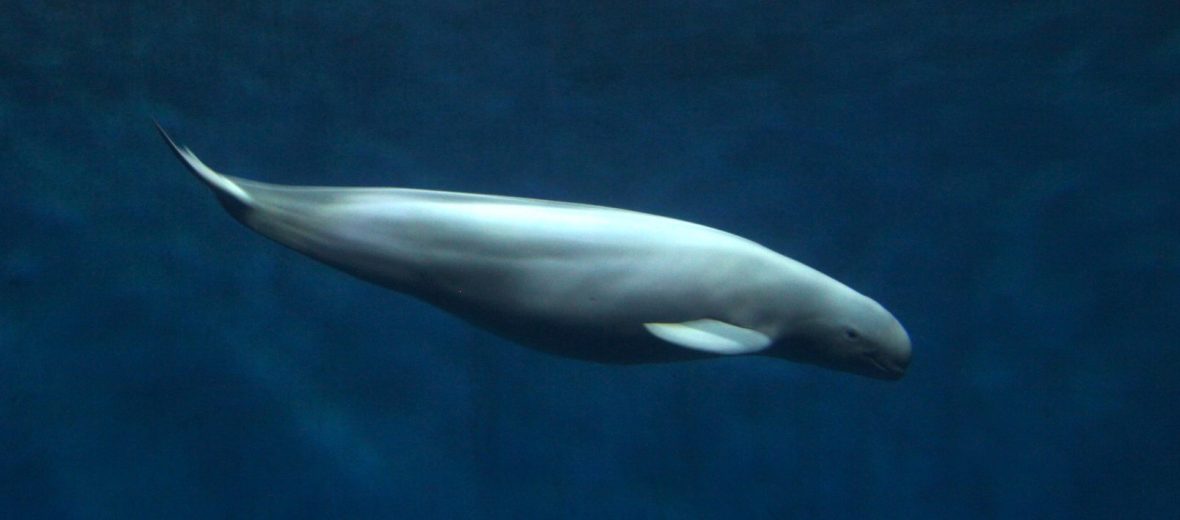
The Indo-Pacific finless porpoise can be found in the coastal waters of Asia, specifically the Indian and Pacific Oceans. Preferring a soft and/or sandy bottom, they can also be found dwelling in shallow bays, mangroves, estuaries, and rivers. Unfortunately, these porpoises face many threats. Their primary threats are habitat loss and destruction at the hands of commercial and industrial developments, energy production, and mining; interference with shipping lanes; dams; overfishing; bycatch (being caught in fishing nets and long lines; pollution; and climate change that can cause storms and flooding, which can cause fertilizer, toxins, and rubbish to be washed into their habitats. The IUCN lists these awesome creatures as Vulnerable. Their numbers are also decreasing. The latest assessment of this species was conducted in 2017.
First the Stats…
Scientific name: Neophocaena phocaenoides
Weight: Up to 72 lbs.
Length: Up to 5.58 feet
Lifespan: Up to 33 years
Now on to the Facts!
1.) The Indo-Pacific finless porpoise is the only known porpoise to lack a true dorsal fin.
2.) Like other porpoises, they are diurnal (active during the day).
3.) They can be seen as individuals or in pods of up to and over 3 individuals.
4.) Even though they are active swimmers, they tend to be shy of boats and thus can’t be seen riding bow waves.
5.) These critters also tend to avoid showy water breaches.
But wait, there’s more on the Indo-Pacific finless porpoise!
6.) When they surface, they not only barely break the water, but they also tend to take longer – up to 1 minute – to take a succession of 3 – 4 breaths before submerging again.
7.) 100 kHz and over clicks are produced on the narrow-band and are used in part for echolocation.
Did you know…?
These porpoises tend to stay submerged for about 4 minutes at a time.
8.) A group of porpoises is called a crowd, herd, pod, school, or shoal.
9.) These critters are molluscivores (eat mollusks and shellfish) and piscivores (eat fish) that prey on various fish, crustaceans, and cephalopods. They also occasionally feast on leaves, various plant matter, rice, as well as aquatic eggs deposited on vegetation.
10.) The Indo-Pacific finless porpoise is polygynous (1 male mates with multiple females).
But wait, there’s still more on the Indo-Pacific finless porpoise!
11.) Females undergo up to an 11 month gestation (pregnancy) that yields a single calf.
12.) Calves are up to 33 inches in length at birth.
Did you know…?
Porpoises have up to 120 teeth that are flat at the tip and shaped like a spade.
13.) The calves are independent in up to 15 months.
14.) Noise and chemical pollution are 2 big factors in their lives. Both of which cause stress and/or death.
15.) These porpoises evolved from ancestors dating back 15 million years ago!
Now an Indo-Pacific Finless Porpoise Video!
Be sure to share & comment below! Also, check out the Critter Science YouTube channel. Videos added regularly!
Want to suggest a critter for me to write about? Let me know here.
Some source material acquired from: Wikipedia & IUCN



